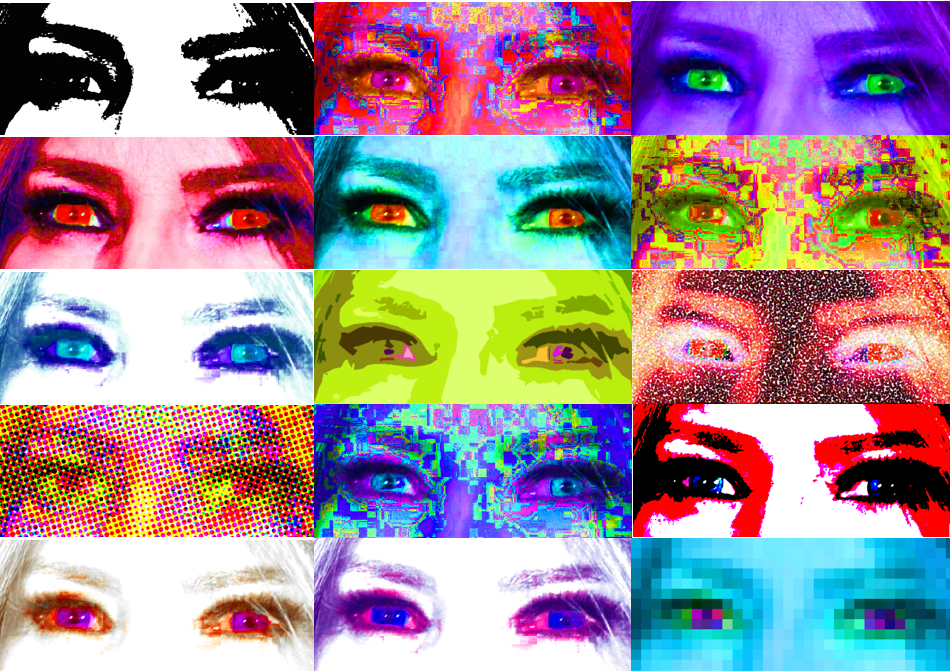Color: Form and Shape
Four exhibitions up right now in New York City--three on the Upper East Side, one in Chelsea--provide a range of chromatic experiences. Let me show you.
At the Met: Chroma: Ancient Sculpture in Color

Let me quote from the accompanying text: "The reconstruction is based on studies of the extensive color preserved on a replica found in Delos." The patterning may not be exact to the original but it is based on "art historical analysis of ancient imagery and pictorial elements as they appear, for instance, in painting."
Detail below
The patterns, we are told, "are visible in ultraviolet-induced luminescence and raking light on the original marble sculpture." Further, this figure "may represent the Trojan prince, Paris, who abducted Helen and thus caused the Trojan War."
While Ulrike Brinkman used egg tempera to paint the reconstructed sculptures, it is known that many of the original sculptures were painted with encaustic. This krater is the only known vessel showing the painting of a marble sculpture with wax. Here Herakles (Hercules to the Romans), down from Mt. Olympus, is depicted watching a painter polychroms a sculpture of himself. The painter is shown applying encaustic paint to the figure. We know it is encaustic because the assistant at left is tending a brazier for tools that would have been used to melt and apply the wax
One other thing about the polychromed sculptures: They depict an ancient world that was not just white, something we maynot see when viewing all that white marble. (A look at the diversity of faces in the Fayum Portraits, painted during the era of Graeco Roman Egypt, makes this immediately apparent.) For more on the subject, there's this New Yorker article.
At the John Molloy Gallery: Technic/Color
A few blocks and about 2500 years away is a beautifully conceived and installed exhibition that embraces color and form in an entirely different way. Painters Stephen Maine and Melissa Staiger and sculptor Naomi Cohn engage in lively chromatic badinage in which color zips and jumps between two and three dimensions.
Maine has perfected a painterly version of printing directly onto canvas. His palette is limited to a couple or three hues per canvas, but he packs a retinal punch, wresting plenty of gesture, nuance and surface from his materials and technique. Cohn matches him in color and gesture. Her ceramic forms are bold, their color via glaze. Cohn's forms are echoed in the geometry of Melissa Staiger's compositions while her deeply built-up surfaces engage with Maine's.
Dare I call this a chromatic menage à trois?
Left: Melissa Staiger, Multi-Color Yellow, 2022, acrylic on panel; on pedestal at window: Naomi Cohn, Untitled (notched/orange/red), 2022, ceramic, glaze, oil paint
At the Jennifer Baahng Gallery: Sharon Butler: Next Moves
The structure in her paintings--off-balance elements that are stacked, often teetering or suggestive of falling--are of a piece with the construction of the paintings themselves. Stacked and pieced, often askew, they contain a visual mishmash, sometimes flat, sometimes deeply spatial, that comes together just right. I'm not on Instagram, but I'm told that the pixelated grid that appears throughout the new work relates to the pixels in those small drawings. Those little squares provide a stabilizing element that is paradoxically jumpy and off kilter.
So if I'm reading these paintings correctly, Butler's next moves are to work larger and to keep the viewer a bit tipsy without falling. It's a heady sensation.
Exhibition up through November 15
. . . . . . . . . . . . . . . . . . . .




















